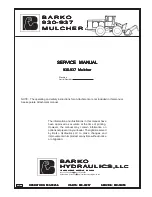
When using this system with a fall arrest harness according to EN
361, safe attachment takes place at the fall arrest
attachment
points (A
), any individual connectors (karabiners) must comply
with EN 362 and should be attached to these (A).
Lanyards for Work Positioning Harnesses according to
EN 358:2000 (positioning lanyard)
If the lanyard for work positioning harnessess is delivered without
connectors (karabiners), the connectors used (karabiners) must
comply with EN 362 and must be fastened to the anchor end
connection point and to the length adjuster (rope clamp).
Lanyards must be attached to the lateral work positioning attach-
ment points or to the central sternal work positioning attachment
point of the work positioning harness according to EN 358.
The placement and adjustement of the work positioning harness
lanyard must be chosen so as to render a fall impossible and
ensure a safe working position. The connection device for work
positioning harnesses must be kept taught, the anchor point
must be above or at hip height and the free fall height must be
limited to 0.5 m.
The diameter of the component around which the work positio-
ning lanyard is looped using a circular weft may not be smaller
than 75 mm.
When working with the work positioning lanyard in combination
with sharp tools (knives, saws, power saws) particular attention
and caution are in order. A power saw can cut through even work
positioning lanyards with an uncoated steel core. These types of
jobs must not be performed if damage to the lanyard cannot be
completely ruled out. Whenever applicable, additional measures
should be taken (redundancy)!
Caution! Lanyards for work positioning harnesses according to EN
358 (work positioning lanyards) and work positioning harnesses
are not suitable for fall arrest purposes, where appropriate, a sup-
plementary fall arrest system according to EN 363 must be used!
Anchor devices according to/ following EN 795 B
The length of an anchor device must always be adjusted to the
object it is to be looped around, see also Figures 2-4.
An anchor device according to / following EN 795 B may not be
used in a fall arrest system without energy absorbers according
to EN 355.
The anchor device is meant to be used by only one user at a time.
Prior to using a fall arrest system, please ensure that the
necessary free space in the work area (unobstructed height) of
7 m underneath the user is provided for. Lanyards without energy
absorbers are used as restraint systems for work positioning.
Caution! Connectors for anchoring aids according to EN 795 B
must comply with EN 362.
GENERAL INFORMATION ON CHOOSING AN ANCHOR POINT,
SAFETY, PRODUCT LIFE, STORAGE, CARE AND IDENTIFICATION
All adjustable parts must be checked regularly during use.
ANCHOR POINT
In order to avoid high loads and swinging falls in the event of a
fall, anchor points for belay purposes must always be as vertical
as possible above the person to be belayed. The lanyard/ anchor
device from the anchor point to the person secured should always
be kept as taut as possible. Slack ropes must be avoided! The
anchor point must be designed in such a way that, when fixing the
PPE, no effects can occur which reduce the stability and it is not
damaged during use. Sharp edges, ridges and crushing can seri-
ously impair the stability. These should be covered, where neces-
sary, using suitable auxiliary equipment. The anchor point and the
anchoring must be able to withstand the expected loads in a worst-
case scenario. Even when using shock absorbers (according to
EN 355) the anchor points should be designed for catching forces
of at least 12 kN, also see EN 795.
In practice the anchor device can be extended to the product
length at its maximum.
54526_GAL_Saf_Verbindungsmittel_MS_140513.indd 12
54526_GAL_Saf_Verbindungsmittel_MS_140513.indd 12
13.05.2014 12:31:36
13.05.2014 12:31:36













































